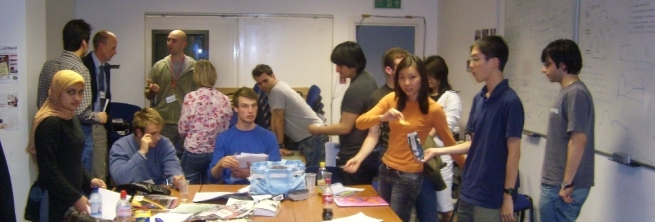Imperial
From 2007.igem.org
(Difference between revisions)
| Line 32: | Line 32: | ||
<td style="width: 50%; padding-left: 3px; vertical-align: top;"> | <td style="width: 50%; padding-left: 3px; vertical-align: top;"> | ||
<div id="SummaryBox"> | <div id="SummaryBox"> | ||
| - | |||
<h2>Achievements</h2> | <h2>Achievements</h2> | ||
| - | |||
<div class="parabox">Insert Achievements here! | <div class="parabox">Insert Achievements here! | ||
</div> | </div> | ||
Revision as of 17:59, 18 October 2007


Our contribution to the synthetic biology community will be the investigation of Cell-Free Systems
This site is currently under construction. For more information, have a look at our OpenWetware site.
Project SummaryThe Imperial College iGEM 2007 team consists of ten 2nd year undergraduates from Bioengineering and Bioscience. This year our contribution to the synthetic biology community will be the investigation of Cell-Free Chassis, the common platform on which Cell By Date and Infector Detector will be built.
|
AchievementsInsert Achievements here!
|
Infector DetectorInfector Detector is a system that will detect the presence of biofilm infections on urinary catheters by reporting on the presence of AHL, a signalling molecule used by E.coli. The system is able to detect very small concentrations of AHL, and outputs a fluorescent protein as a result. |
Cell by DateCell by Date will tell you when meat has been out of the fridge for too long. It produces fluorescent protein when it is found in an ambient temperature above a threshold of 10°C. The fluorescent protein accumulates over time, and eventually becomes visible to the naked eye once the system has been exposed to high temperatures for enough time. |
